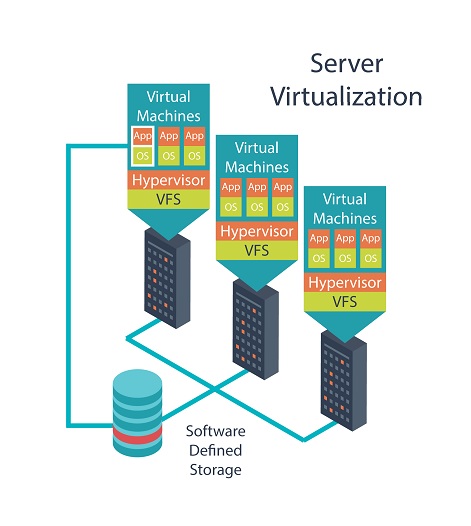Server Virtualization

Server virtualization is the masking of server resources, including the number and identity of individual physical servers, processors, and operating systems, from server users. The server administrator uses a software application to divide one physical server into multiple isolated virtual environments. The virtual environments are sometimes called virtual private servers, but they are also known as guests, instances, containers or emulations.
Typical enterprise data centers contain a huge number of servers. Many of these servers sit idle as the workload is distributed to only some of the servers on the network. This results in a waste of expensive hardware resources, power, maintenance and cooling requirements. Server virtualization attempts to increase resource utilization by partitioning physical servers into several multiple virtual servers, each running its own operating system and applications. Server virtualization makes each virtual server look and act like a physical server, multiplying the capacity of every single physical machine.

Is Server Virtualization Right for Your Business?
Server virtualization consolidates multiple operating systems (OS) on a single server. Consider it if you need to do any of the following:
- Use more applications and OS without breaking budgets for hardware, electricity, and space.
- Reduce the hours that IT staff spend on installing, patching, administering, and supporting applications servers.
- Add storage virtualization to reduce application downtime and simplify backup.
- Master cloud challenges. Having experience with virtual servers will prepare your business for migrating other business-critical services to the cloud.

Virtualization is a process that entails more than purchasing and installing a product
Server virtualization can be viewed as part of an overall virtualization trend in enterprise IT that includes storage virtualization, network virtualization, and workload management. This trend is one component in the development of autonomic computing, in which the server environment will be able to manage itself based on perceived activity. Server virtualization can be used to eliminate server sprawl, to make more efficient use of server resources, to improve server availability, to assist in disaster recovery, testing and development, and to centralize server administration.